Why Use a Pacifier?
Before choosing the best pacifier for your baby, it’s essential to understand why using a pacifier is beneficial. Pacifiers are not just a solution to calm a crying baby, but also provide several emotional and physical benefits.
Some of the main reasons for using a pacifier are discussed below:
1. Satisfy Natural Sucking Reflex
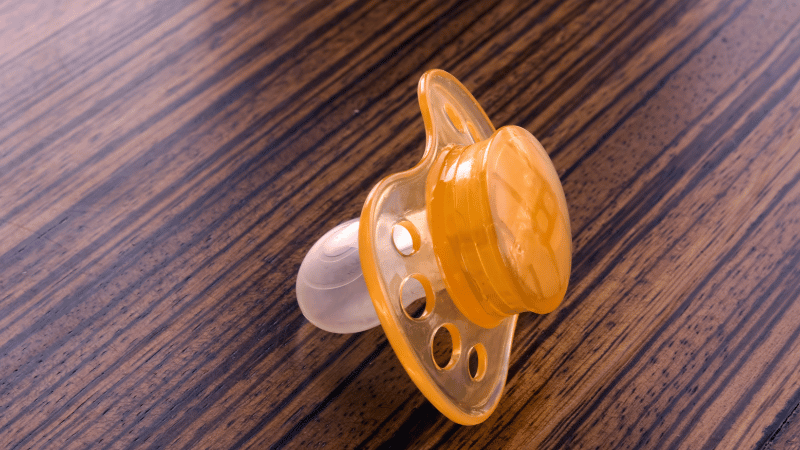
Babies are born with a natural sucking reflex, and pacifiers help fulfill this reflex. The pacifiers provide comfort when the little ones are trying to fall asleep or are feeling uncomfortable.
2. Reduce The Risk Of SIDS
Sudden Infant Death Syndrome (SIDS) keeps parents worried about the safety of their child 24/7. Pacifiers are proven to reduce the risk of SIDS, especially during sleep, as sucking on a pacifier keeps the baby attentive and helps with their breathing.
3. Provides Comfort
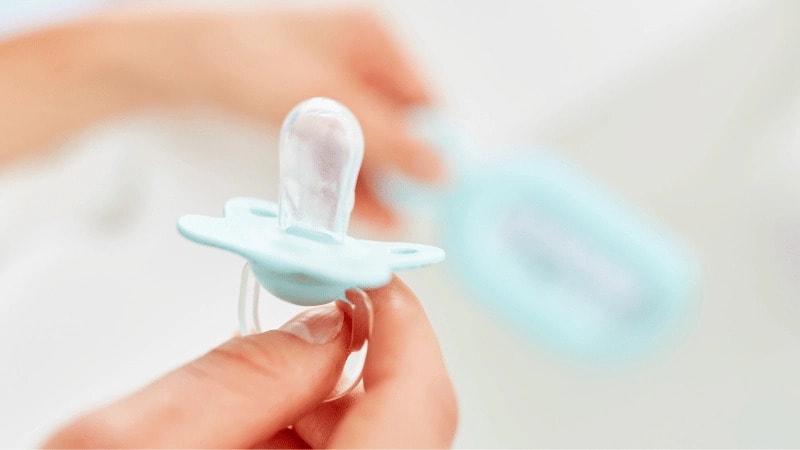
When switching from breastfeeding to bottle feeding, babies can become irritated. Pacifiers help soothe and comfort them during this transition phase.
4. Reduce Ear Pressure During Flights
Getting on a plane with babies can be difficult, but a pacifier can help. Pacifiers keep the fussy baby relaxed throughout the flight and reduce ear pressure caused by shifts in altitude.
5. Promotes Better Sleep
Sucking on a pacifier offers a sense of comfort and security, which helps little ones settle themselves to sleep. The sucking motion helps babies fall asleep easily. Additionally, it helps babies who wake up frequently to fall back asleep quickly.
How to Choose the Right Pacifier?
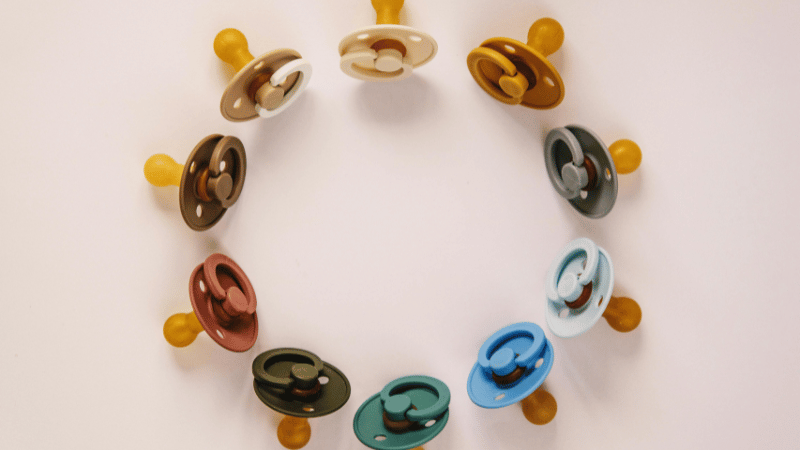
A pacifier that is best for one baby is not necessarily the right one for another. Choosing the correct pacifier involves evaluating several factors, which are mentioned below:
Age
The first factor that helps parents choose the correct pacifier is the age group of their baby. The best pacifiers for newborns are the ones with a small nipple design that fits comfortably into their little mouths.
Newborn pacifiers are designed with a gentle texture, ideal for the delicate gums of 0-3-month-olds. Pacifiers with stronger suction resistance provide the necessary comfort for 3-6-month-old babies.
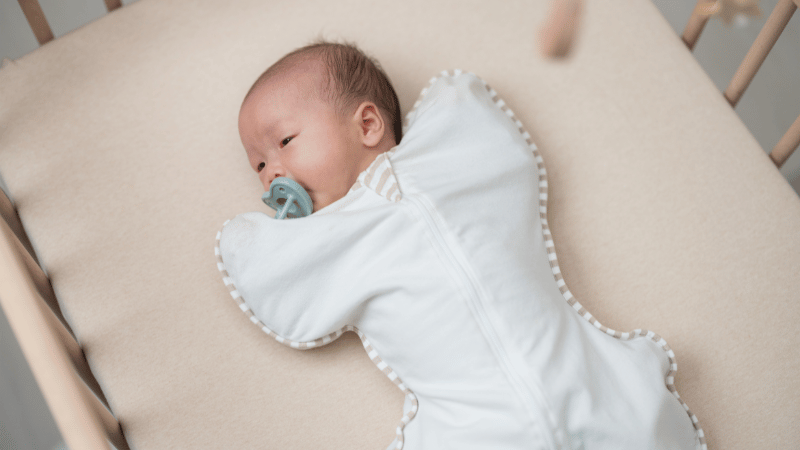
Additionally, orthodontic pacifiers are considered the best for babies over 6 months. Their orthodontic designs support healthy oral development. Pacifiers are usually labelled by age group, making it easier for parents to choose the right one.
Size
Make sure to choose a pacifier size that matches your baby’s age group. Choosing a pacifier that is too small can pose a choking hazard, whereas one that is too big can cause discomfort.
Shape
Pacifiers for babies come in different shapes, and each one affects how a baby sucks. Newborns prefer the standard, cylindrical pacifier.
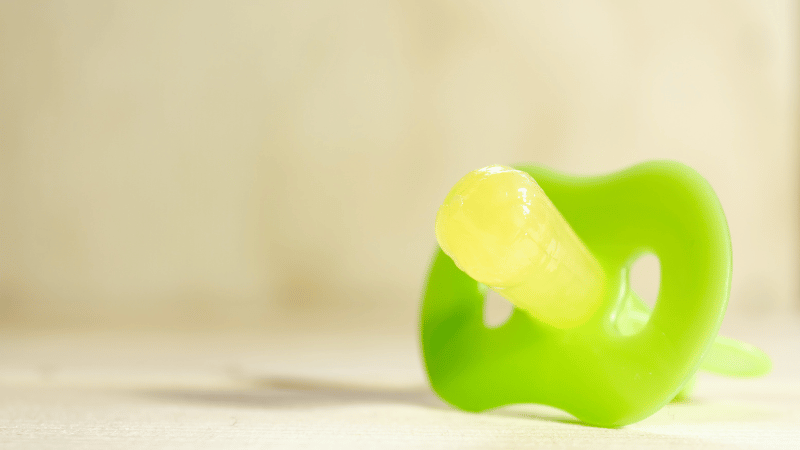
The orthodontic pacifier is flattened on one side, promoting proper jaw alignment and preventing dental issues, making it the best pacifier for teeth development.
The cherry pacifiers, which are rounded at the end, offer a fuller feeling that some babies find comfortable.
Material
Pacifiers are made from either silicone or latex, and both these materials offer unique advantages. Silicone pacifiers are durable, easy to clean, and maintain their shape even when used for a long time. They are also odorless and ideal for babies with sensitivities.
Latex pacifiers are softer and more flexible, closely resembling a mother’s breast. However, latex pacifiers are not long-lasting and are not suitable for babies with latex allergies.
Are Silicone Pacifiers Safe? (Pros & Cons)
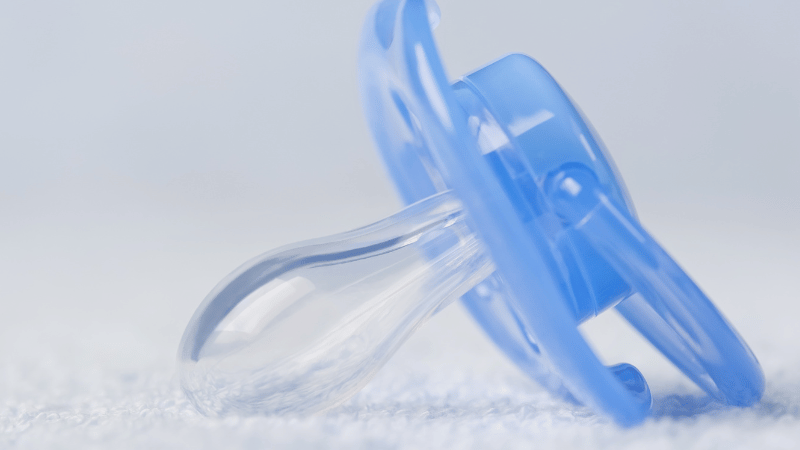
Silicone rubber pacifiers are among the popular options available on the market. Parents thinking of buying a pacifier often question whether these pacifiers are safe.
Well, the pros and cons of silicone pacifiers are listed below. Read on to make an informed decision:
Pros:
The pros associated with silicone pacifiers are:
Easy to Sterilize and Odor-Resistant
Silicone pacifiers can be cleaned and sterilized easily. They are also not likely to develop an odor even when used for a long time.
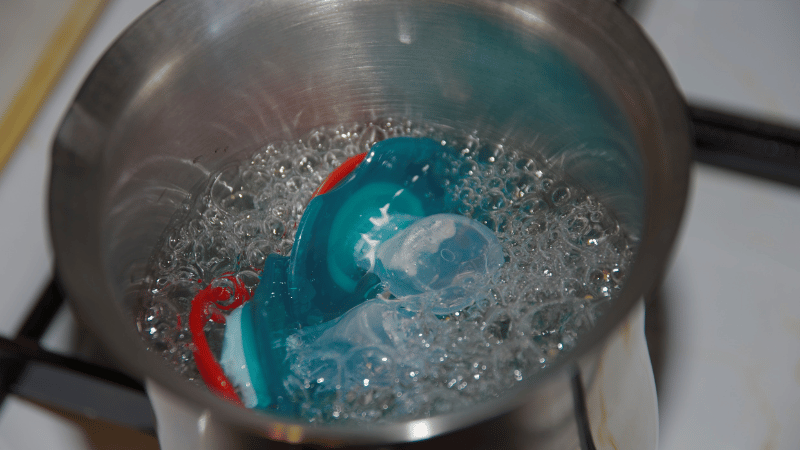
Hypoallergenic and BPA-Free
Babies are sensitive, and medical-grade silicone is hypoallergenic, making it ideal for sensitive babies and hygienic, too. It takes excellent care of preemies and newborns.
Durable
Silicone is a long-lasting material, and pacifiers made using silicone can last for a long time without losing their shape.
Transparent and Non-porous Surface:
One thing that makes silicone pacifiers the best is their surface. The non-porous surface doesn’t let dirt or moisture penetrate the pacifiers, making them safer for your baby.
Cons
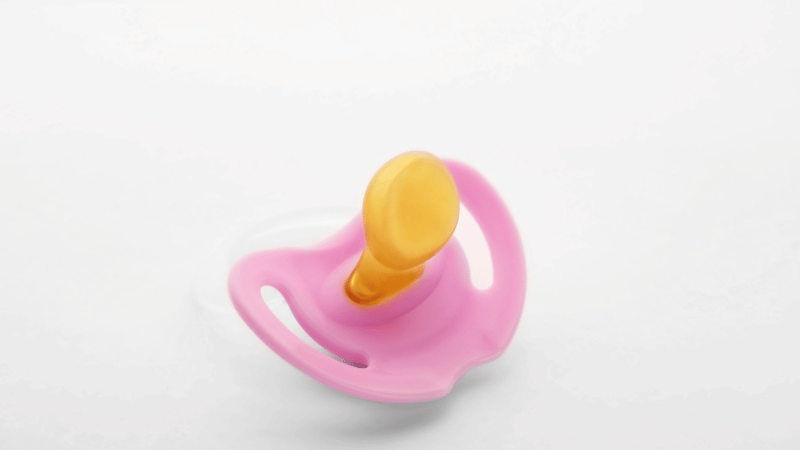
There are some cons associated with silicone pacifiers as well, these include:
Can Be Firmer Than Latex
Silicone pacifiers are firmer than the latex ones, making them durable. Babies prefer soft pacifiers; this firmer texture may cause them discomfort initially.
Slightly More Expensive
The silicone pacifiers are a bit more expensive than other options available. However, because they are durable, these pacifiers don’t need frequent replacements, making them ideal in the long run.
Are Latex Pacifiers Safe? (Pros & Cons)
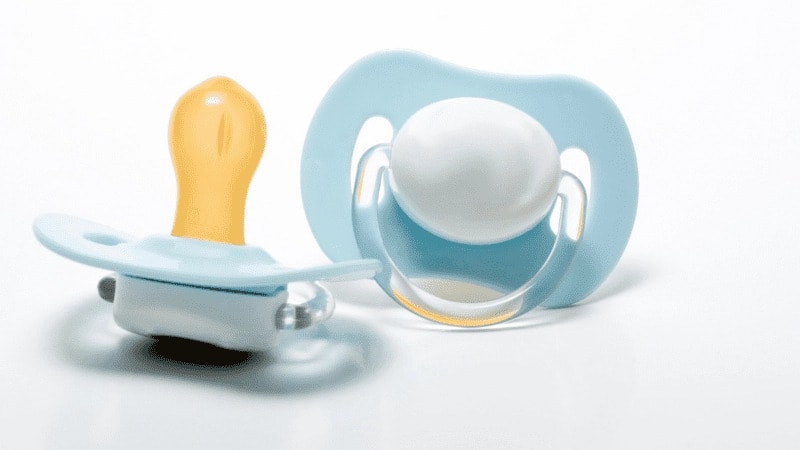
Similar to silicone pacifiers, latex pacifiers also have some pros and cons, which are mentioned below:
Pros
The pros associated with latex pacifiers include:
Softer and Flexible
The latex pacifiers are considered the best newborn pacifier, as they mimic the mother’s breast. The latex pacifiers are soft and flexible, giving newborns a comfy feel.
Preferred By Some Breastfed Babies
As mentioned earlier, the soft and flexible texture that is somewhat close to the nipple makes this pacifier the best pacifier for a breastfed baby.
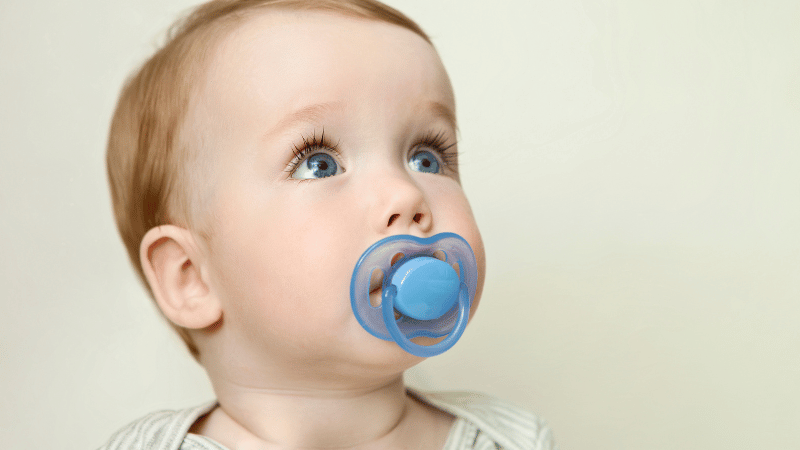
Biodegradable and Eco-Friendly
Being non-biodegradable, silicone is not considered eco-friendly. But the latex material is eco-friendly and can be decomposed easily.
Being eco-friendly and biodegradable, latex pacifiers are preferred by eco-conscious and environmentally aware parents.
Warmer Texture
Latex pacifiers have a warmer and softer texture. Newborns and breastfeeding babies find the latex pacifiers more soothing and comfortable.
Cons
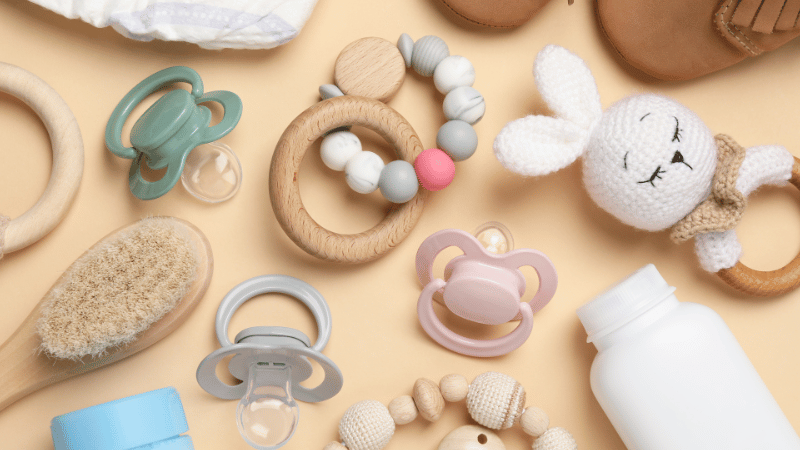
The cons associated with latex pacifiers include:
May Cause Latex Allergies
Latex is an allergic material, and for babies with sensitivity, latex may cause allergies. It is advised to always check for latex sensitivity before introducing this pacifier to your baby.
Absorbs Odors And Stains
Latex pacifiers, due to their porous texture, readily absorb odor and stains, which is why many parents do not prefer them. Silicone pacifiers can be sterilized; however, one should not sterilize latex pacifiers, as heat can damage the material and affect longevity.
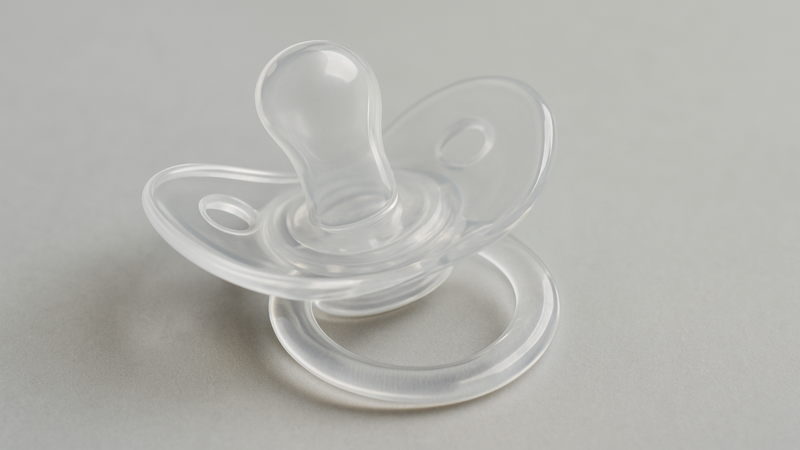
Not Durable
While silicone can last long, the latex can not. You need to replace latex pacifiers frequently, as they get scratches and lose their shape easily.
Silicone vs Latex: Which Pacifier Is Better for Newborns?
The table below provides a side-by-side comparison of silicone and latex pacifiers based on different features to help parents choose the best pacifiers for newborns.
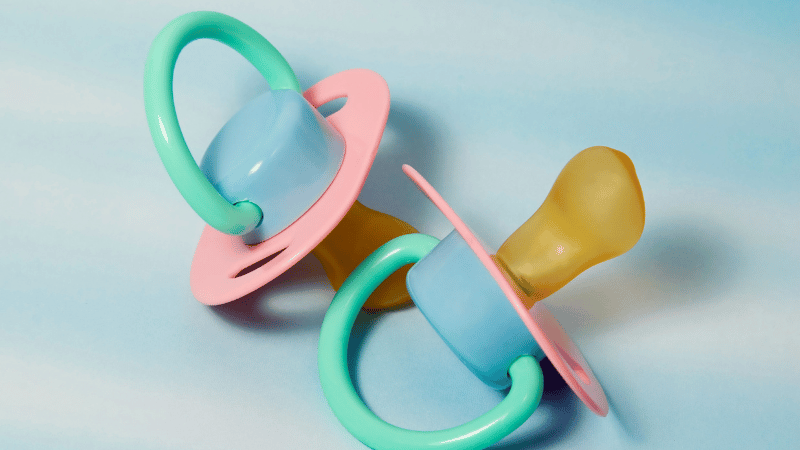
| Feature | Silicone Pacifier | Latex Pacifier |
| Texture | Firm and smooth | Soft and flexible |
| Hygiene | Easier to clean, unlikely to develop odor | Porous, can absorb dirt and develop odor |
| Durability | Long-lasting | Not Durable |
| Allergen Risk | None | Possible latex allergy |
| Best For | Newborns, preemies, and sensitive babies | Breastfed babies and those who prefer a natural texture |
To summarize, silicone pacifiers are better in terms of safety and hygiene. However, for a natural feel, latex pacifiers are considered the best pacifiers for breastfed babies.
Best Pacifiers for Newborns: Top Features to Look For
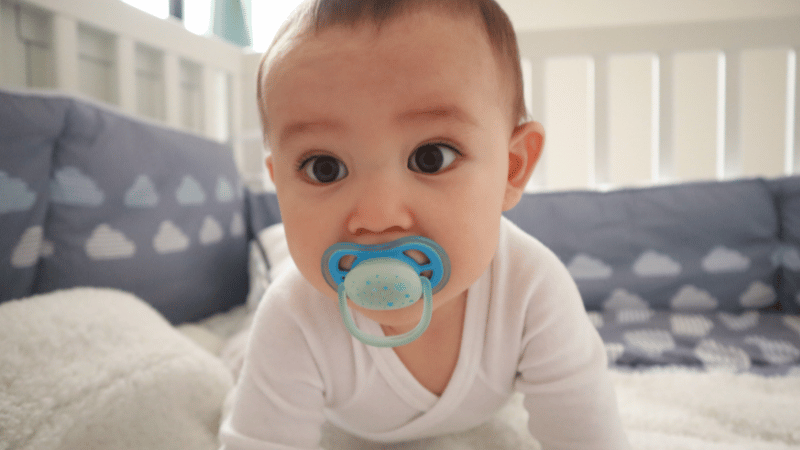
Choosing the best newborn pacifier involves considering various features, including:
- Always select a pacifier made using BPA-free and food and medical-grade materials.
- Choose a pacifier with no detachable parts to avoid choking hazards.
- Always prefer a pacifier with holes for proper ventilation to avoid skin irritation caused by saliva build-up around the baby’s mouth.
- Choose the pacifier that is dishwasher-safe to ensure proper cleaning.
- Go for a pacifier that has an easy-grip handle design.
Best Pacifiers for Breastfed Babies: What to Know
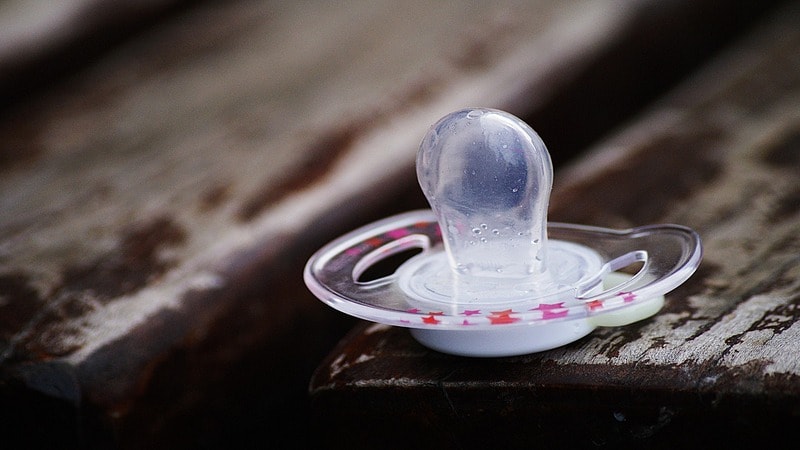
If you are on a mission to choose the best pacifiers for a breastfed baby, make sure to opt for a soft and flexible nipple similar to a mother’s nipple.
An orthodontic pacifier is considered the best pacifier for teeth because its symmetrical design reduces the risk of crooked teeth.
For breastfed babies, choosing an orthodontic shape pacifier is a great idea. Lastly, make sure to select the size of the pacifier according to the child’s age, as an oversized pacifier can cause discomfort and contribute to nipple confusion.
Conclusion
Both latex and silicone pacifiers have pros and cons, but for newborns, medical-grade silicone is the safest and most durable choice. Its hypoallergenic nature prevents allergies in babies.
Always choose trusted suppliers like Hongju Silicone, offering BPA-free and FDA-certified products to ensure your baby’s safety and comfort with every soothing moment.
Hongju Silicone: Your Trusted Partner for Custom Silicone Solutions
With over 20 years of design and manufacturing expertise, Hongju delivers precision-engineered silicone products that meet your exact needs. Enjoy flexible low MOQs, fast 3–5 day prototyping, and dependable quality for every order.
Contact us today to get a competitive bulk quote! Start your next project with confidence!
FAQs
Q1.What pacifier do dentists recommend?
Dentists recommend orthodontic pacifiers, as they are designed to support healthy oral development. Their flattened shape allows proper tongue placement, making it a top favorite among dentists.
Q2. What pacifier is closest to the breast?
Latex pacifiers are close to the breast as they are soft, flexible, and have a warm texture. Cherry-shaped pacifiers with a rounded top also mimic a mother’s breasts.
Q3: Are silicone and latex pacifiers safe for newborns?
Yes, both are safe when made from BPA-free materials, but silicone is more durable, while latex is softer and more natural.
Q4: How often should I replace my baby’s pacifier?
Inspect pacifiers regularly and replace them every 4–6 weeks or sooner if cracks or discoloration appear to keep your baby safe.